From the hilltop we look out over a wide, open landscape of astounding beauty. Gentle hills surround us, pristine nature, a place almost without inhabitants, the air quiet and peaceful. The sunset and moonrise heighten the pastoral atmosphere.
Some of us taste the juicy sabras that we just picked from the cacti of Khirbet Umm Burj. But the voice from the loudspeaker ruins our momentary enjoyment. It reminds us that the observation point – that's how it's described on the sign erected by the Antiquities Authority – is the ruin of a Palestinian home that once stood here, in which people lived until the end of October, 1948. It asks us to look down and see, under our feet, right in the heart of this enchanted region, signs of the Arab culture that was destroyed and the extent of the damage caused by the nakba sixty years ago, the nakba that Zionism brought upon the Palestinian people.
An hour earlier, as we climbed the hill, we passed the fresh excavations the Antiquities Authority is conducting at the site. They uncovered Roman burial caves, and underground cavities in which Jews hid during the rebellion against the Romans more than two thousand years ago. The archaeologist who accompanied us told us that the staff of the Antiquities Authority think this is the site on which the ancient Jewish village of Bish once stood. He himself isn't convinced. The voice from the loudspeaker interferes with the excitement caused by the impressive underground antiquities, and asks people to look up and see, a few meters above their heads, the ruins of the houses in which the Palestinians of Khirbet Umm Burj lived, those who were expelled from their land in 1948 by the new Israeli army, towards Hebron.
Khirbet Umm Burj was in the center of the Hebron district before the state of was established. It was captured in 1948 along with 15 other villages in the district, and all were almost completely destroyed in order to prevent their inhabitants from returning. The area was totally cleared of its Palestinian population by the Fourth Battalion of the Har'el Brigade, that was sent to expel the Palestinians hiding in the area. And in fact, from the observation point atop the demolished house, the region looks uninhabited.
The 70 people on the tour heard about the lives of the inhabitants of the small village prior to the nakba, and about how it disappeared from the area and from our consciousness. The Antiquities Authority that is developing the region is preparing it for tourism, paving roads, erecting signs and handing out leaflets, but it doesn't provide any information at all about the Palestinian village, evidence of whose life and destruction are evident on the ground. So, for example, the Antiquities Authority uncovers very ancient tombs, bounds and marks them, describes them, makes people aware of them, while right beside them lie hundreds of neglected and forgotten Palestinian graves, disappearing from the landscape and from consciousness, gradually and "naturally."
We left a sign for future Israeli tourists that indicates the location of the Palestinian cemetery. We also erected signs with the name of the village, Khirbet Umm Burj, which is known today, in the Israeli language, as Hurvat Burgin. We walked past the walls of the Palestinian houses, still half-standing as a monument to the nakba, descended the hill between the village's trees and ancient caves, and ended up at the bottom of the hill next to the village's main well, "Haroun Well."
To counteract the politics of forgetting and concealment undertaken by the Israeli establishment to erase Palestinian identity, we prepared a booklet for the Israeli reader, "Remembering Umm Burj," that we distributed during the tour. It contains essential information about the period that preceded the village's nakba.
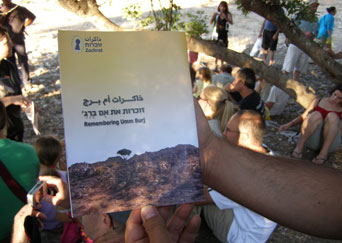
Umm Burj Tour 2008 (4)
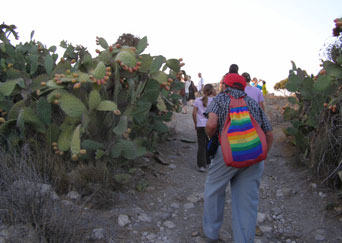
Umm Burj Tour 2008 (5)
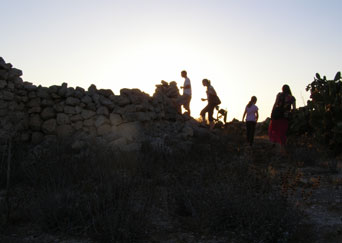
Umm Burj Tour 2008 (6)
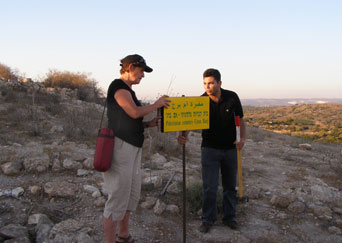
Umm Burj Tour 2008 (7)
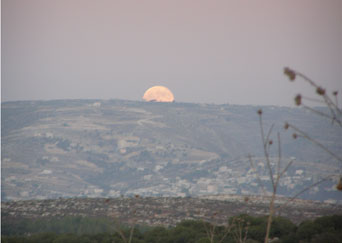
Umm Burj Tour 2008


